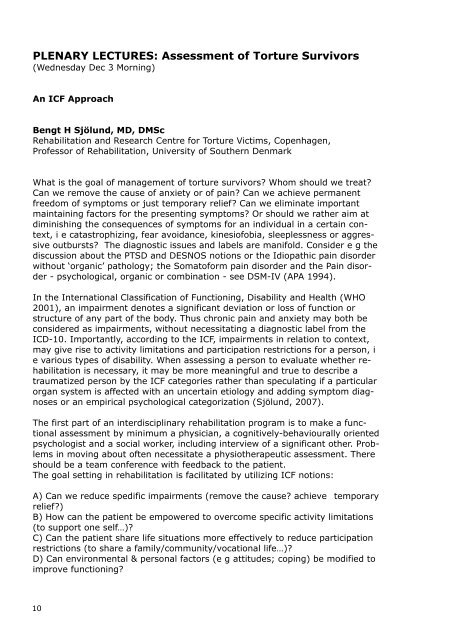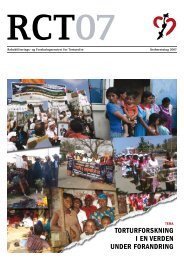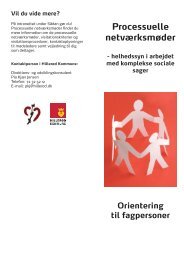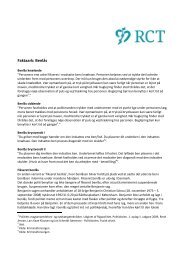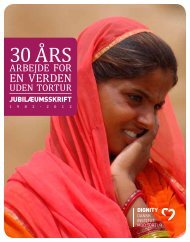Rehabilitating Torture Survivors - Dignity - Danish Institute Against ...
Rehabilitating Torture Survivors - Dignity - Danish Institute Against ...
Rehabilitating Torture Survivors - Dignity - Danish Institute Against ...
Create successful ePaper yourself
Turn your PDF publications into a flip-book with our unique Google optimized e-Paper software.
PLENARY LECTURES: Assessment of <strong>Torture</strong> <strong>Survivors</strong>(Wednesday Dec 3 Morning)An ICF ApproachBengt H Sjölund, MD, DMScRehabilitation and Research Centre for <strong>Torture</strong> Victims, Copenhagen,Professor of Rehabilitation, University of Southern DenmarkWhat is the goal of management of torture survivors? Whom should we treat?Can we remove the cause of anxiety or of pain? Can we achieve permanentfreedom of symptoms or just temporary relief? Can we eliminate importantmaintaining factors for the presenting symptoms? Or should we rather aim atdiminishing the consequences of symptoms for an individual in a certain context,i e catastrophizing, fear avoidance, kinesiofobia, sleeplessness or aggressiveoutbursts? The diagnostic issues and labels are manifold. Consider e g thediscussion about the PTSD and DESNOS notions or the Idiopathic pain disorderwithout ‘organic’ pathology; the Somatoform pain disorder and the Pain disorder- psychological, organic or combination - see DSM-IV (APA 1994).In the International Classification of Functioning, Disability and Health (WHO2001), an impairment denotes a significant deviation or loss of function orstructure of any part of the body. Thus chronic pain and anxiety may both beconsidered as impairments, without necessitating a diagnostic label from theICD-10. Importantly, according to the ICF, impairments in relation to context,may give rise to activity limitations and participation restrictions for a person, ie various types of disability. When assessing a person to evaluate whether rehabilitationis necessary, it may be more meaningful and true to describe atraumatized person by the ICF categories rather than speculating if a particularorgan system is affected with an uncertain etiology and adding symptom diagnosesor an empirical psychological categorization (Sjölund, 2007).The first part of an interdisciplinary rehabilitation program is to make a functionalassessment by minimum a physician, a cognitively-behaviourally orientedpsychologist and a social worker, including interview of a significant other. Problemsin moving about often necessitate a physiotherapeutic assessment. Thereshould be a team conference with feedback to the patient.The goal setting in rehabilitation is facilitated by utilizing ICF notions:A) Can we reduce spedific impairments (remove the cause? achieve temporaryrelief?)B) How can the patient be empowered to overcome specific activity limitations(to support one self…)?C) Can the patient share life situations more effectively to reduce participationrestrictions (to share a family/community/vocational life…)?D) Can environmental & personal factors (e g attitudes; coping) be modified toimprove functioning?10


